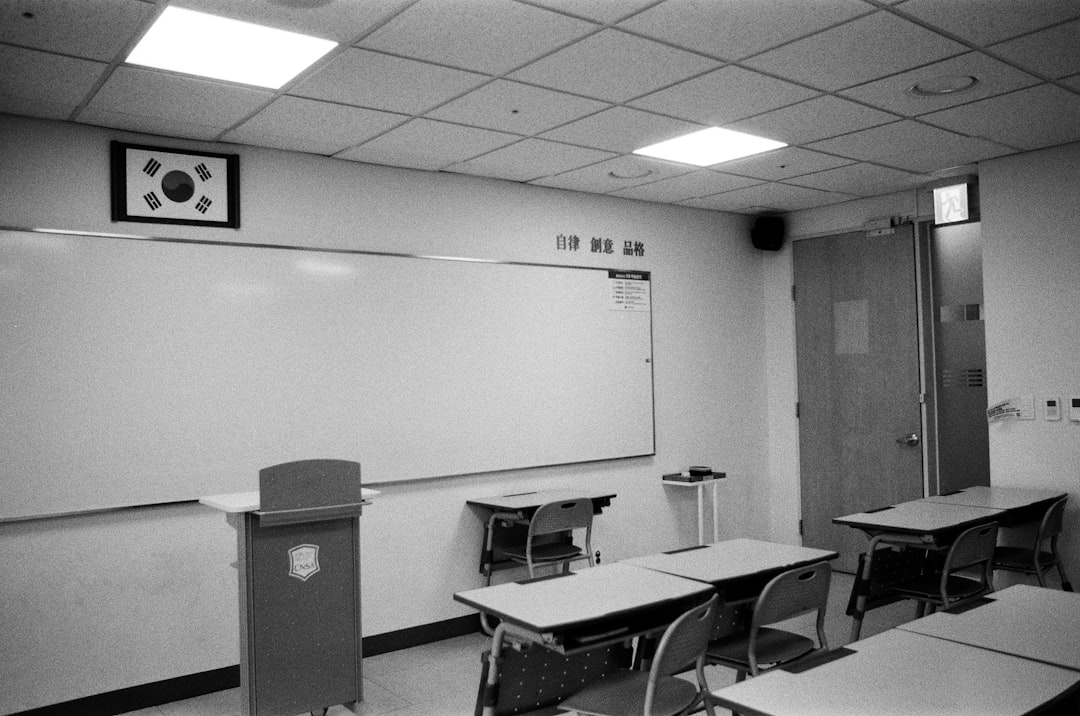

Engage prospects with a scan and streamline customer engagement with FREE QR code marketing tools by Sona – no strings attached!
Create a Free QR CodeFree consultation

No commitment

Engage prospects with a scan and streamline customer engagement with FREE QR code marketing tools by Sona – no strings attached!
Create a Free QR CodeFree consultation

No commitment
For organizations delivering ESL training programs, efficiently gathering accurate learner feedback is an ongoing challenge. Printed evaluation forms and manual collection typically lead to low response rates, fragmented data, and a lack of real-time actionable insights. These analog processes create information silos, where valuable learner perspectives are missed and the resulting blind spots make it almost impossible to quickly close feedback loops or adapt courses based on evolving needs. In many cases, high-value input from engaged learners goes untracked, causing missed opportunities for program improvement and increased risk of learner disengagement.
The rise of QR codes in education provides a straightforward, digital bridge between ESL learners and instructors, making it simple to collect feedback instantly from any classroom, event, or learning material. With mobile scanning eliminating the friction of traditional surveys, programs can now capture input from even those who hesitate to fill out forms or who engage with content but remain anonymous. This not only boosts engagement but also brings visibility to previously unknown segments of the learner base, allowing faster and more targeted responses to student needs.
By integrating QR codes at every meaningful touchpoint, ESL training programs unlock a more flexible, data-driven approach to feedback, ultimately improving program quality, learner satisfaction, and measurable outcomes. Harnessing these digital cues ensures that valuable engagement signals are never missed, helping educators identify both advocates and at-risk learners for tailored follow-up. Here is how ESL education professionals can use QR code technology to streamline the feedback process and elevate training success.

Gathering actionable feedback can be a persistent challenge for ESL training programs, particularly when relying on static systems like paper forms or impersonal email surveys. These methods often result in missed high-value insights because some of the most engaged students who attend sessions but do not submit forms remain untracked in manual collection workflows. This gap leads to lost opportunities for improvement and leaves instructors uncertain about what is working and what is not.
Modern QR code solutions uniquely bridge the physical and digital environments, transforming static feedback collection into a real-time, high-conversion workflow that surfaces input from even passive participants. By placing scannable codes in visible, contextually relevant locations, you reduce friction at the exact moment learners are most willing to respond. Instructors gain timely classroom intelligence while administrators see aggregated patterns that drive curriculum upgrades, instructor coaching, and resource prioritization.
An example: A language institute adds QR codes to post-lesson slides and classroom posters. Learners scan during the last five minutes and submit two-minute surveys with five scaled items and one open comment. Over one term, response rates rise by 35 percent and manual data entry drops to nearly zero. Using dynamic QR codes, the team updates the form every four weeks to match evolving topics and proficiency targets, keeping questions relevant and preventing fatigue.
A practical tip is to pilot QR feedback with one or two classes before scaling. Validate that codes are easy to scan from different distances and that survey language is appropriate for the cohort’s level. Once the format works, standardize it across your program with consistent iconography, clear calls to action, and predictable placement so scanning becomes a routine part of the learning experience.

ESL programs must connect offline classroom experiences with digital data that informs real decisions. When learners are hesitant to write lengthy comments or struggle with complex forms, useful feedback can disappear. Traditional collection methods rarely provide real-time insight into sentiment changes from week to week, which makes it hard to intervene early for struggling students or double down on successful approaches. QR codes change this dynamic by making participation fast, consistent, and measurable.
Placed thoughtfully on materials learners already use, QR codes invite immediate action without requiring an app or login. They provide a low-stakes entry point for students who prefer short, mobile interactions over long surveys. For administrators and instructors, the resulting data eliminates guesswork and helps track how feedback trends vary by class, instructor, location, or module.
One simple tactic is to add a feedback QR code to course certificates and completion letters. Graduates and recent alumni can share reflections after the experience settles, giving you insights that do not surface in the last day’s rush. This approach adds a long-tail feedback stream that would otherwise be lost.

Choosing the right QR code format is critical to capturing specific kinds of feedback while aligning with learner preferences. Many ESL programs collect bits of insight across channels, then struggle to connect comments back to specific lessons, resources, or instructors. Combining multiple QR formats helps organize feedback flows and reduces fragmentation across offline and online touchpoints.
Dynamic QR codes are especially powerful in ESL contexts. They enable centralized management, real-time content updates, and destination changes as your course evolves. If your curriculum rotates every six weeks, dynamic codes prevent outdated links from living on printed handouts. They also keep analytics intact so you track scan trends over time even as forms and destinations change.
For static, evergreen resources like a tutor directory or academic calendar, a static QR code is sufficient and reliable. For individualized campaigns such as module-specific feedback or event registration, use dynamic codes to maintain agility and measurement without reprinting assets.
ESL programs often achieve good engagement during initial enrollment, then struggle to sustain participation and capture meaningful follow-up insight. When feedback channels are limited to end-of-term emails or sporadic forms, you miss signals that point to upsell opportunities, curriculum gaps, or alumni advocacy. QR codes embedded throughout the learner journey convert passive moments into active data points that fuel continuous improvement and growth.
Consider mapping the student lifecycle from orientation to graduation and beyond. At each stage, design QR touchpoints that ask one clear question or encourage one next step. Keep messages concise, make benefits explicit, and ensure scanning is frictionless. This creates a feedback rhythm that produces longitudinal insight, not just snapshots.
When placement is tied to attention-rich moments, scan rates rise and feedback becomes both timely and specific. Over time, you will identify patterns such as which modules consistently receive lower clarity scores or which campus sites drive higher satisfaction. These insights feed into curriculum committees, instructor development plans, and strategic resource allocation.
Disconnected or one-size-fits-all feedback channels often blur classroom dynamics and mask underlying needs. Strategic QR deployments enable program leaders to gather focused, actionable information tied to specific experiences. The following use cases reflect common ESL interactions and show how QR codes translate offline behavior into measurable outcomes.
These use cases counter the perennial challenge of incomplete input by making every learner interaction an opportunity for data-driven refinement. Over time, you move from anecdote-based decisions to evidence-based strategy that is sensitive to differences across classes, instructors, and campuses. The result is a more adaptive program that meets learners where they are and responds to what they need.
Turning a scan into a long-term relationship requires thoughtful segmentation and timely follow-up. In ESL programs, learners range from prospects to current students, alumni, and even employer partners. Each group scans in different contexts, which creates an opportunity to personalize content and encourage the next best action. Without segmentation, high-intent signals get lost and outreach feels generic.
QR platforms that support tagging and audience building help you organize scan data by course, module, location, or persona. When a learner scans after an advanced grammar workshop, you can trigger messages about upper-level electives or placement opportunities. When a parent scans during orientation, you can send resources that explain program expectations and support structures.
Modern solutions such as Sona QR streamline this process. Each QR code can be configured as a smart entry point that assigns tags, appends UTM parameters, and passes data to your CRM or marketing tools. Over time, you build audience segments based on real behavior instead of assumptions. This fuels intent-driven retargeting campaigns that increase course completion, resource usage, and alumni engagement.
Program messaging rarely lives in one channel. When brochures, social posts, emails, and events point to different destinations, audiences get confused and outcomes are difficult to measure. QR codes unify your mix by providing a single, scannable action across formats that can be tracked consistently. With clear calls to action and standardized design, every touchpoint becomes measurable and aligned with your program goals. For channel strategy, see QR code marketing.
A multi-channel approach starts with mapping where learners and stakeholders interact with your brand in the physical world and on digital platforms. For each medium, decide the most relevant action you want a scanner to take. Use consistent visual framing and concise CTAs to lower cognitive load and increase conversions.
A centralized platform like Sona QR lets you manage all codes, monitor performance across channels, and sync scan activity with CRM and ad tools. This provides a single source of truth for offline-to-online engagement and unlocks rapid iteration based on real outcomes rather than guesses.
A well-run QR campaign follows a clear, repeatable process. Before launching, align your use case with a measurable outcome and ensure your team knows how to promote scanning. The following steps provide a blueprint you can adapt to different cohorts, campuses, and program types.
Start by defining the friction you want to resolve or the opportunity you want to unlock. Align the QR code with a single action and a clear benefit for the learner so the value proposition is obvious.
This first step ensures your QR campaign is not a generic link but a tightly scoped initiative tied to outcomes that matter.
Choose between static and dynamic QR codes based on whether the destination will change and how much data you need to collect. For most feedback scenarios, dynamic codes are the better fit.
Selecting the right type protects your investment in printed materials and enables iterative optimization without reprinting assets. Start creating QR codes for free.
Design affects scan rates. Codes should be unmistakable, visually consistent, and easy to scan in real classrooms and event environments. Testing reveals barriers you cannot see on a computer screen.
High-quality design and testing reduce friction for learners, which leads to stronger participation and cleaner data.
Place QR codes where attention is already focused. Reinforce the habit by using consistent locations and reminding learners to scan at predictable moments.
A thoughtful deployment plan ensures visibility without clutter. Keep copy consistent and avoid placing too many different codes in one area to prevent choice overload.
Measurement closes the loop. Track scan volume, conversion rates, and qualitative themes. Share insights with instructors and staff so improvements are timely and visible.
Optimization is not a one-time step. As your program evolves, continue to adjust code placements, survey items, and follow-up workflows based on what the data shows.
For program leaders, proving that feedback translates into outcomes is essential. Without robust analytics, it is hard to show how a scan leads to better retention, course completion, or referrals. QR tracking closes this gap by tying real-world interactions to measurable results. When integrated with your LMS and CRM, you can link scan activity to learner performance and program growth.
Granular analytics illuminate which placements drive engagement, which cohorts are under-participating, and when interventions yield improvements. This supports resource allocation decisions such as where to place more tutoring, which instructors need support, or which elective courses deserve expansion. Attribution models can also reveal how feedback-informed changes correlate with enrollment growth or alumni donations. For frameworks, see offline attribution.
The result is a clear line of sight from scan to action to outcome. Instead of guessing which changes matter, you can prioritize based on evidence and communicate impact to stakeholders with confidence.
Scaling QR-driven feedback requires consistent implementation, ongoing training, and a culture that values short, frequent input. The tips below help you move from isolated campaigns to a sustainable feedback system that increases program quality and learner satisfaction.
For creative deployment, consider adding a small QR sticker to student ID cards that links to a living support hub, or printing a QR on alumni diplomas that connects to a career outcomes survey. These touchpoints extend feedback beyond the classroom and keep your program connected to learner needs across the lifecycle.
QR codes are redefining how feedback is collected, understood, and used in ESL training programs. By turning every classroom, resource, and event into an actionable touchpoint, leaders move from sporadic, delayed insights to a steady flow of high-quality data. This enables proactive interventions, more adaptive curricula, and clearer visibility into what drives learner success. The payoff is practical and measurable: improved satisfaction, stronger completion rates, and more effective use of staff time.
Modern ESL programs that embrace QR-enabled feedback create a closed-loop system where scans trigger analysis and analysis drives targeted action. Sona is an AI-powered marketing platform that turns first-party data into revenue through automated attribution and activation, helping teams connect touchpoints across the funnel. When paired with platforms like Sona QR for code management and Sona for attribution, scan data flows directly into your operational tools, linking physical engagement to digital outcomes. The result is a program that listens continuously, adapts quickly, and delivers outcomes that exceed evolving learner expectations.
QR codes have revolutionized ESL training programs by transforming feedback collection from a tedious task into an immediate, insightful process. Whether it’s gathering real-time student input, enhancing lesson effectiveness, or tailoring instruction to individual needs, QR codes replace outdated surveys with instant, mobile-friendly interactions that capture valuable data effortlessly. Imagine knowing exactly which teaching methods resonate most and being able to adapt your curriculum on the spot to boost learner outcomes.
With Sona QR, you can create dynamic, trackable QR codes in seconds, update feedback campaigns instantly without reprinting materials, and connect every scan to actionable insights that improve your training impact. No more guessing—just precise, data-driven decisions that elevate your ESL programs. Start for free with Sona QR today and transform every student scan into a powerful feedback loop that drives success.
QR codes can be placed at key touchpoints such as classroom walls, handouts, slide decks, workbooks, event badges, and resource centers to collect real-time learner feedback and facilitate support requests.
QR codes increase feedback response rates, reduce manual data entry, provide real-time insights, improve learner engagement, enable dynamic content updates, and connect offline experiences with digital data.
Choose static codes for permanent resources and dynamic codes for feedback or campaigns, design codes with clear branding and calls to action, test scanning across devices, and deploy them in visible, context-relevant locations.
Effective methods include integrating QR codes for instant feedback, using mobile-friendly surveys, embedding QR codes in course materials and events, automating alerts for learner needs, and leveraging digital signage and app downloads.
Track scan volume and feedback patterns via a centralized dashboard, analyze ratings and comments for trends, integrate scan data with LMS and CRM systems, and use analytics to link feedback to outcomes like retention and course completion.
Use Sona QR's trackable codes to improve customer acquisition and engagement today.
Create Your FREE Trackable QR Code in SecondsJoin results-focused teams combining Sona Platform automation with advanced Google Ads strategies to scale lead generation

Connect your existing CRM

Free Account Enrichment

No setup fees
No commitment required

Free consultation

Get a custom Google Ads roadmap for your business






Launch campaigns that generate qualified leads in 30 days or less.
